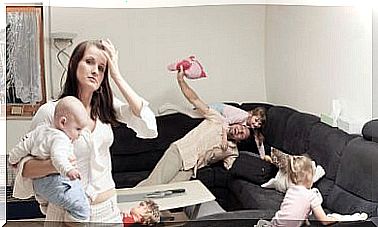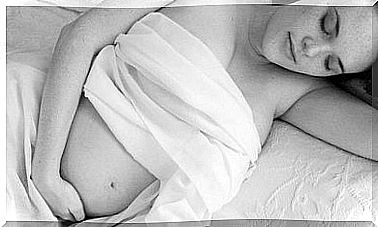Vaginal Tearing During Labor

Almost all women experience pain both during and after childbirth. Some women also experience what is called a ‘vaginal tearing’ during labor.
It is true that the vagina stretches during childbirth. However, the pressure of a baby passing through the pelvis can cause the skin and underlying muscles to become tense. This can cause the vagina to tear out, a problem that must then be repaired.
Vaginal tearing is quite common during childbirth. Women most at risk are those who become mothers for the first time and those who have large babies.
Finally, mothers who have been in labor for a longer period of time are also at higher risk of vaginal tearing.
Depending on the severity of the tear, women may need stitches or special creams. Below we describe the types of vaginal tears that exist and ways to prevent them.
Types of Vaginal Tears That Occur During Labor
There are several types of vaginal tears:
- First-degree tear: A small tear in the perineum that affects only the skin. Usually does not require stitches.
- Second-degree tear: Additional injury to the perineum affecting both the skin and pelvic floor muscles. Requires some stitches.
- Third degree tear: Affects the pelvic floor muscles even worse and extends to the anal sphincter.
- Fourth degree tear: Occurs when the tear extends all the way from the vagina to the rectum, injuring the entire perineum. Requires suturing in an operating room.
How do you avoid vaginal tearing during childbirth?

Although there is no guarantee, certain measures can help prevent this type of injury. Below we will tell you how you can reduce your chances of having a vaginal tear. Pay attention!
1. Prepare your body
During the nine months leading up to childbirth, women must prepare their bodies for childbirth. For example, it is important to include some type of exercise in your daily routine during pregnancy.
Among other benefits , exercise improves circulation, which in turn improves skin elasticity. It also increases blood flow to the perineum and vagina.
At the same time, we recommend providing proper nutrition and hydration to take care of your skin and muscles. Include foods rich in omega-3, low-fat protein, and a wide variety of vegetables to complement your healthy diet.
Finally, get enough vitamin E, vitamin C and zinc so that your body can stretch and recover after childbirth.
2. Perineal massage to prevent vaginal tearing during childbirth
Preparing the perineum during pregnancy reduces the risk of vaginal tearing for new mothers. Massages can help women become familiar with their own bodies and gain confidence in their ability to give birth.
However, if you’re not comfortable with the idea of a perineal massage, remember that it’s not a necessary requirement.
3. Birth position is very important
The position you choose when pressing undoubtedly has a major influence on the chance of tearing. For example, you can lie on your side with your legs pointing up or put pressure on the coccyx and perineum. This reduces the size of the pelvic floor and increases your chances of not tearing.
When it comes to choosing a birth position, follow your instincts. The position you feel most comfortable with is the right position for you. Therefore, you should move freely until you find a position that will help you get through your contractions.
In any case, sitting on your hands and knees is the position that puts the least amount of stress on your perineum.
4. Pelvic Floor Exercises To Reduce The Chances Of Vaginal Tearing During Labor

Pelvic floor exercises serve to strengthen the pelvic muscles. The idea is that the muscles return to their normal shape after birth and also reduce your chances of incontinence.
It is also important to learn to relax your pelvic muscles as this maximizes the space for your baby to descend. You can make huge progress in just a few minutes a day.
5. Avoid clipping
An episiotomy is a surgical cut in the skin and muscles to enlarge the vaginal opening. Ironically, the cutting does not protect the perineum during labour. So, in effect, they increase your chances of getting an injury.
What happens is that once the cut is made, the baby’s head can cause the muscle to tear even more.
Finally, remember that vaginal tearing during childbirth unfortunately occurs in a large number of women.
The best thing you can do to recover and reduce the pain is to avoid activities that require effort. Also, take warm water baths to ease the pain and apply ice packs to ease the swelling.









